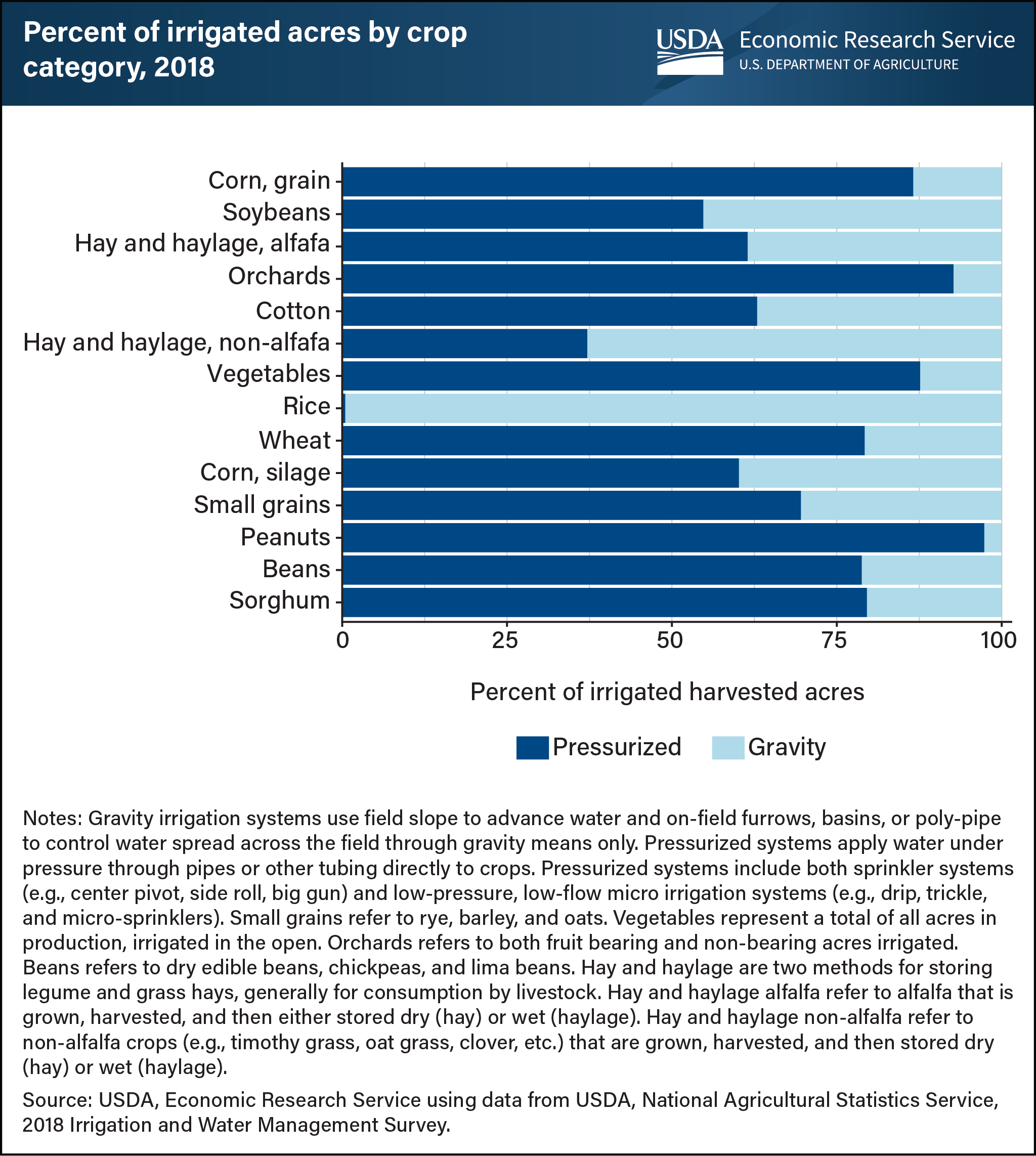Use of irrigation systems vary by crop
- by R. Aaron Hrozencik
- 3/2/2022

Irrigation methods vary by crop because of differences in production practices, crop value, water source, and soil characteristics. Irrigation application methods can be broadly categorized as either gravity or pressurized systems. Pressurized irrigation systems apply water under pressure through pipes or other tubing, while gravity irrigation systems use field slope to advance water across the field surface. In general, pressurized irrigation systems are more efficient than gravity irrigation systems under most field settings, as less water is lost to evaporation and seepage. Rice has the largest share of acres irrigated by gravity systems, which is related to the flooding requirements of most rice production systems in the United States. Peanuts have the largest proportion of acres irrigated by pressurized systems. Peanut cultivation is concentrated in the Southeastern United States (i.e., Alabama, Georgia, and Florida), where the prevalence of sandy, well-drained soils makes gravity irrigation methods generally unsuitable because of seepage losses. Pressurized systems are also prevalent among high-value specialty crops, such as vegetables and orchards. Pressurized irrigation systems, particularly low-flow micro irrigation systems, are generally more expensive than gravity irrigation systems, precluding their use among lower value crops. Pressurized systems are also more prominent among crops concentrated in regions more reliant on groundwater, including irrigated corn across the Eastern and Central United States. This chart was drawn from the USDA, Economic Research Service report “Trends in U.S. Irrigated Agriculture: Increasing Resilience Under Water Supply Scarcity,” published December 28, 2021.

